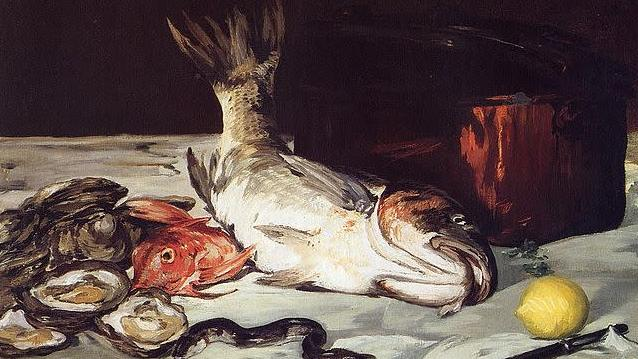Art Historian Admits That 19th-Century Food Paintings Can Often Look Totally Gross
We may receive a commission on purchases made from links.
Long before the dawn of smartphones or instant cameras, if you wanted to share pictures of your food with total strangers, you needed to grab some canvas, an easel, and your set of brushes and paint it for them. It's yet to be seen how many of Instagram's modern masterpieces will stand the test the time like the still life tablescapes of yore, which are still disgusting people like art historian Marni Kessler well over a century after their creation. After dissecting the history of veils in the art in her first book, Kessler has turned her attention to the culinary delights of France in her new book, Discomfort Food: The Culinary Imagination in Late Nineteenth-Century French Art. If paintings from this era do more to stimulate your gag reflex than your appetite, you're not alone: as written about by the University of Kansas, Kessler approaches masterworks like Edouard Manet's Fish (Still Life) and Edgar Degas' Portrait of a Man with brutal honesty, taking the position that the food in many of these paintings looks kinda gross.

Take, for example, Kessler's opinion of Antoine Vollon's painting Mound of Butter, in which she does not see beauty, but rather a severed head.
"I understood that this was a painting that far exceeded any superficial sense of the glory of butter," says Kessler. "I felt there was this unctuousness within that dazzling brushwork. I could see that the mound looked like it was melting — and I detected a head."
Kessler can't be sure if Vollon explicitly meant to make his butter look like a severed head, but dives deep into butter history to make a case that he did, citing evidence of unscrupulous butter-tampering, which was common in 19th-century France because of high demand and low supply.
"[M]y argument hinges on the fact that butter was often an amalgamation of things — some poisonous — unrelated to it, and that it generated anxiety for contemporaries," says Kessler. "Butter is also inherently fragile and protean, and the artist builds upon those qualities by referencing the shape of a head, and ... thus also forging a connection to the guillotine, which was still in use and highly contested throughout the 19th century." Didn't see that coming, but now that she mentions it, it's all I can see. Does this make butter even more awesome? Abso-freaking-lutely!
Kessler's book is now available from University of Minnesota Press. For anyone who wants to learn more about gross-looking food in famous paintings, Kessler will be participating in a free virtual book talk on April 28.
